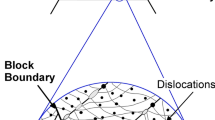Abstract
The family of plate steels represented by ASTM Specification A7101 is finding increasing applications. These low carbon, Cu-Ni-Cr-Mo-Cb, copper precipitation hardened steels have been identified by a number of designations over the years. During early development in the late 1960’s and first commercial production in 1970, the steels were known as IN-787 (trademark of International Nickel Company).2 ASTM specifications were subsequently developed for structural (A710) and pressure vessel (A736) applications over ten years ago. More recent interest and application of this family of steels by the U.S. Navy has lead to development of a military specification MIL-S-24645 (SH),3 also initially known as “HSLA-80.” Significant tonnage is being produced for the U.S. Navy as a replacement for HY80 (MIL-S-16216) in cruiser deck, bulkhead and hull applications.4 In these applications, the enhanced weldability and requirement of no preheat at this high strength and toughness level has been the main motivation for its use. Over the past 15 years, A710 type steels have also been used in a variety of applications, including off-shore platforms, pressure vessels, arctic linepipe valves and off-highway mining truck frames.
Similar content being viewed by others
References
1986 Annual Book of ASTM Standards, Volume 01.04, “Iron and Steel Products,” ASTM, 1986, Philadelphia, PA.
IN-787, A Precipitation Hardening Alloy Steel, The International Nickel Company, Inc., New York, 1978.
“Military Specification: Steel Plate, Sheet or Coil, Age-Hardening Alloy, Structural High Yield Strength (HSLA-80),” MIL-S-24645(SH), Naval Sea Systems Command, Department of the Navy, Washington, DC, September 4, 1984.
E. Czyryca, T. Caton, T. Montemarano and R. Brenna, “HSLA Steels for Naval Ship Construction,” presented International Conference on Technology and Applications of High Strength Low Alloy Steels, Philadelphia, October 3–6, 1983.
R.J. Jesseman and G.J. Murphy, “Mechanical Properties and Precipitation Hardening Response in ASTM A710 Grade A and A736 Alloy Steel Plates,” Journal of Heat Treating, 3 (3), June 1984, pp. 228–236, also given in Reference 4.
A.D. Wilson and W.G. Taylor, “A710A—A High Strength, Low Carbon Alloy Steel for Offshore Applications,” 1985 Offshore Technology Conference Proceedings, OTC 5071, pp. 459–468.
B.A. Graville, “Determining Preheat Requirements for Structural Steels,” presented AWS Annual Meeting, April 1986, Atlanta, GA.
L.G. Kvidahl, “An Improved High Yield Strength Steel for Shipbuilding,” Welding Journal, July 1985, Vol. 64 No. 7, pp. 42–48.
R.J. Jesseman and G.C. Schmid, “Submerged Arc Welding A Low-Carbon, Copper-Strengthened Alloy Steel,” Welding Journal, 62 (11), Nov. 1983, pp. 321s–330s.
Additional information
Alexander D. Wilson received his M.S. in metallurgy in 1969 from the Massachusetts Institute of Technology. He is currently the supervisor of product research at Luk’ens Steel Company in Coatesville, Pennsylvania.
Rights and permissions
About this article
Cite this article
Wilson, A.D. High Strength, Weldable Precipitation Aged Steels. JOM 39, 36–38 (1987). https://doi.org/10.1007/BF03258878
Published:
Issue Date:
DOI: https://doi.org/10.1007/BF03258878




